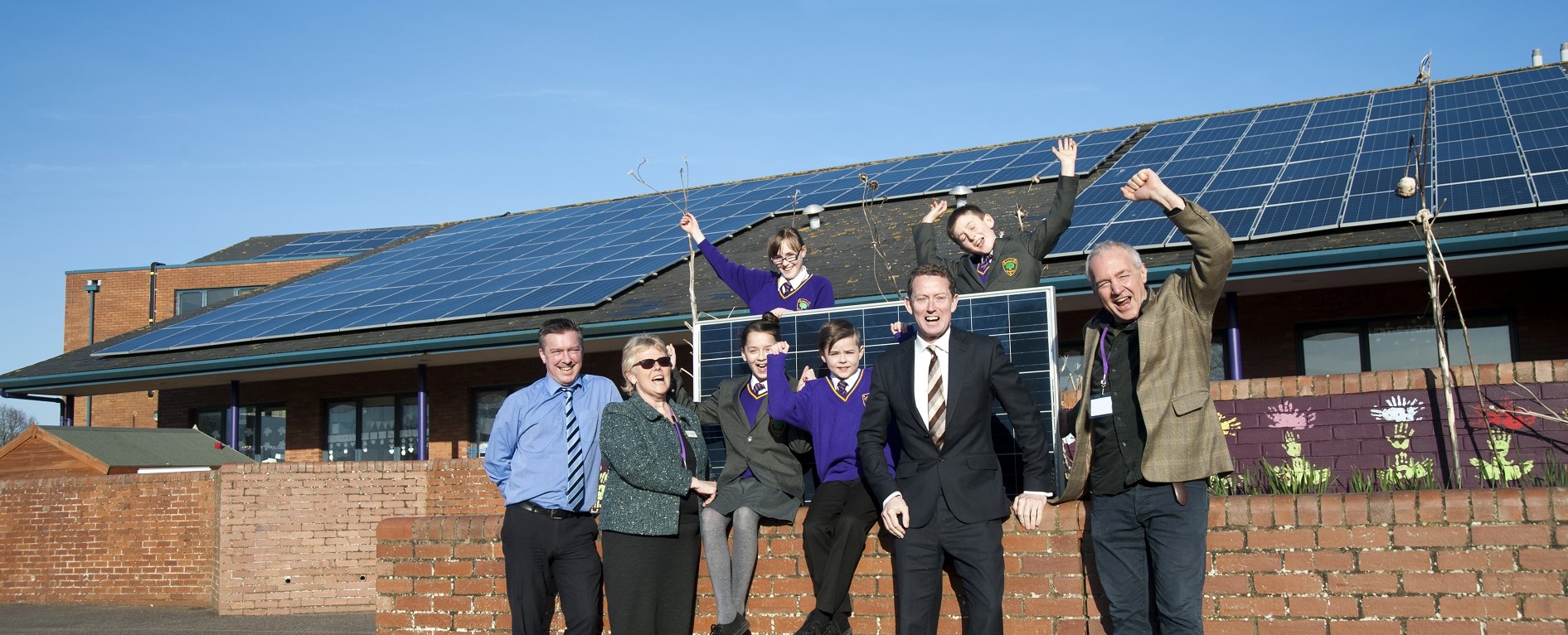The Schools’ Energy Co-operative installs community funded solar panel systems on schools free of charge as well as paying all its profits to its member schools. As a social enterprise, they are dedicated to supporting their school members and providing an alternative to the prevailing commercial rent a roof or leasing model.
Central to this is their aspiration to retain as much as possible of the benefits for the schools, their students and the surrounding communities. They provide educational support to schools and work with the schools and local community groups to maximise the environmental, educational and community impact of the solar installations. This includes exploring ways to help schools save energy by switching to LED lighting.
Since 2014 The Schools’ Energy Co-operative has installed solar PV systems on 56 schools from Poole to Teesside, with more expected soon. They expect to save more than 800 tonnes** of carbon dioxide each year, for at least the next 20 years. Their total capacity now exceeds 2 megawatts, and the installations are expected to produce around 1.9 gigawatt-hours of electricity each year. This is enough to power around 500 typical UK homes, or to make nearly 30 million cups of tea!
Their success had been recognised by three new awards:
- “Community Energy Organisation of the year” by Community Energy England in October 2018
- “Co-operative of the year” by the Co-operatives Congress in June 2019
- “Local Energy project of the year” by Suffolk County Council in July 2019
The schools themselves use most of the energy generated by the PV panels, and any excess is exported to the electricity grid. As the School Energy Co-op owns the systems, the schools pay them for the power they use, at a discount to their normal electricity cost.
On the existing systems, the Co-op also receives the Feed in Tariff subsidy from the government (The feed-in-tariff subsidy, which is guaranteed for 20 years from each installation date, was closed to new installations in March 2019), and payment for any energy exported. These income streams fund the projects operating costs, and payments to shareholders. They retain some money for the future, and everything left is paid to the schools.
August 2020 Update: In 2020 so far, with the support of onboard.earth and its other members, they have installed solar panels on 11 schools and one College – with a typical solar installation on a primary school providing about one third of the school’s electricity needs. In total they have now installed solar arrays on 81 sites representing over 3MW of generating capacity, with an expected output of more than 2.6 GWh each year. This will save about 1,300 tonnes of carbon dioxide emissions annually compared to electricity generation from gas, and would power around 900 typical UK homes.
Find out more at schools-energy-coop.co.uk
** compared to generation from gas

